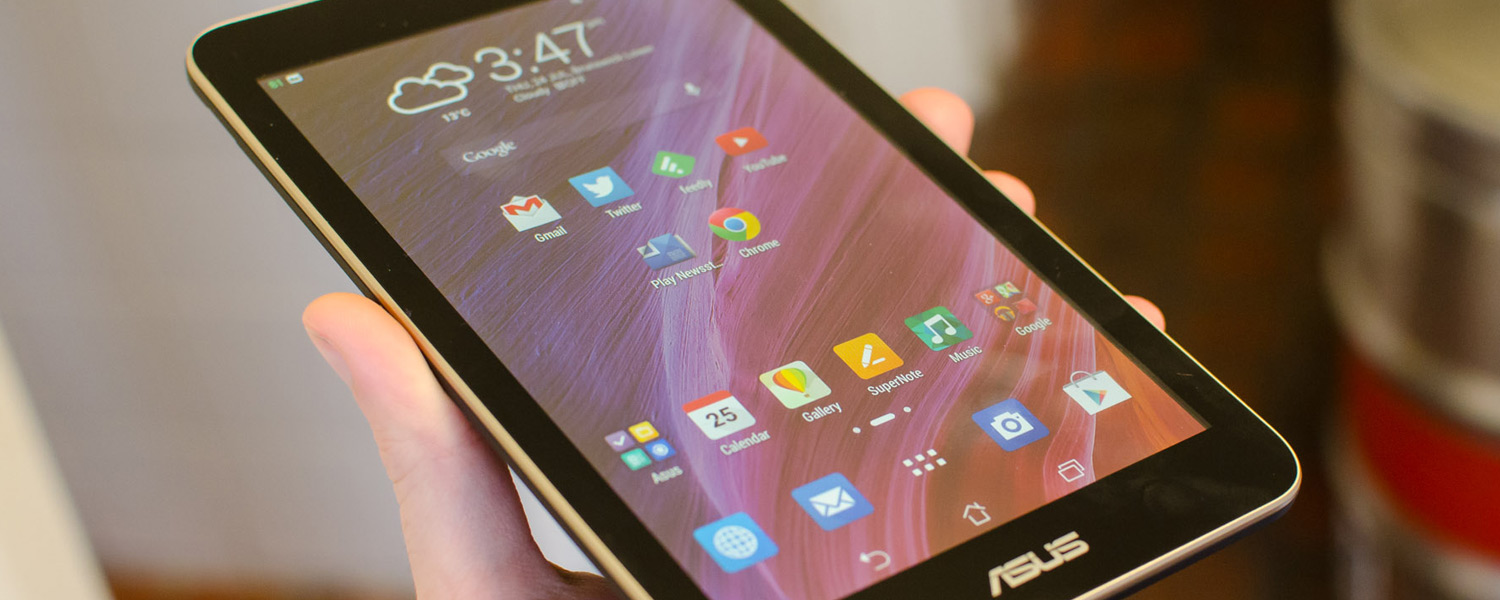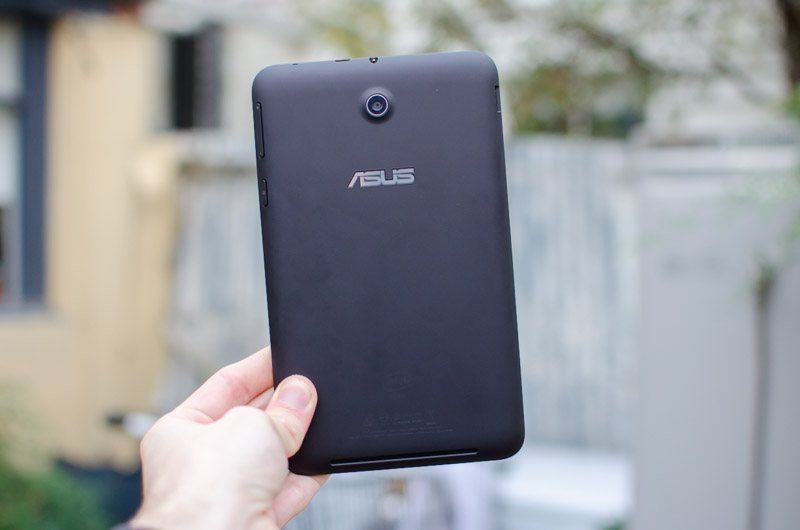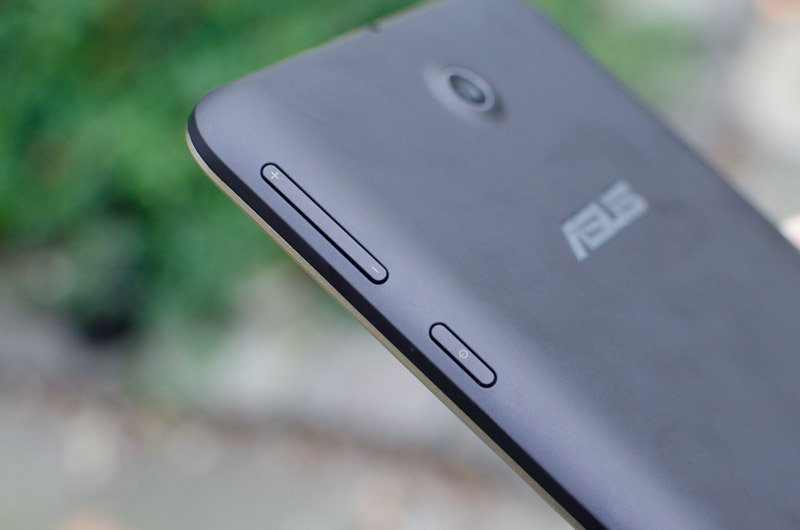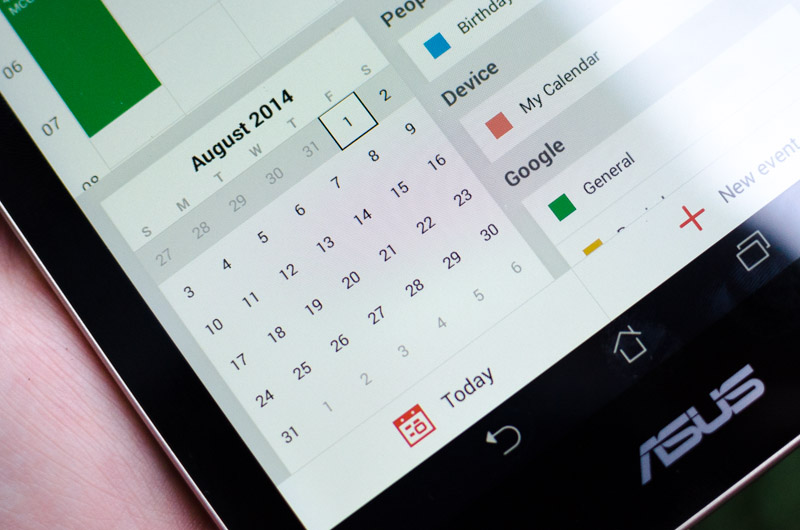The small form factor tablet market is very crowded, with pretty much every manufacturer seeking to claim a slice of the pie through Android, Windows 8 and iOS offerings. Budget models are especially abundant, headed by the supremely popular and generally fantastic Google Nexus 7, which retails for around $215 a year on from its release.
If you want something even cheaper than the Nexus 7, it's tricky to find a product that's actually worth using. Cost-cutting is the name of the game in the sub-$200 market, and a typical 7-inch tablet in this price bracket comes with several compromises. Today, I'm checking out Asus' attempt at a low-cost Android tablet and whether it's worth a small amount of your cash.
I first had some hands-on time with the MeMO Pad 7 at Computex 2014 in Taipei, where the company announced it with little fanfare. The 7-inch tablet packs a WXGA IPS display, Intel Atom SoC and a version of Android 4.4 with Asus' customizations, all for just $150. That puts it squarely in competition with Amazon's Kindle Fire HD 7 and the 2012 model of the Nexus 7.
Design
The design of the MeMO Pad 7 is uninspiring, but functional. There's a screen on the front with a bezel around the edges, and on the back there's not much save for a camera and a few logos: nothing we haven't seen before. At just under 300 grams, the Pad 7 is pretty light as far as small tablets go, but its thickness of 10.0mm (11.3mm at the protruding camera) is average at best.
The curved back makes the MeMO Pad 7 fit comfortably in your hands, and the soft-touch rubberized plastic feels surprisingly pleasing. The plastic wraps around the sides before meeting a metallic-plastic rim, which gives a visual highlight, while the front is entirely protected by glass.
The size of the bezels around the edge of the 7-inch display is nearly perfect for this device; 9mm of buffer on either side is enough to make it easy to hold without touching the display during operation. At the same time, it's not so large that it looks ridiculous or becomes cumbersome.
Disappointingly, the main speaker on the MeMO Pad 7 is found on the bottom portion of the back panel, poking through the plastic as an indented line. There's two speakers in the MeMO Pad 7, which are adequate in quality and volume for occasional use, but you really miss out on a stereo effect when watching videos or playing games in a landscape orientation.
It's understandable, though, that a budget model wouldn't include front-facing speakers: if you want this feature, you'll have to spend a bit more money.
On the right-hand edge is both the volume rocker and the power button. Somewhat confusingly, the power button is located below the volume rocker, so often when I've gone to pick up the tablet I've been pressing one of the volume buttons in an attempt to power it on. Once you get used to it the power button is actually in a great position for one-handed use, although as it's placed on the back panel's curve, it can be hard to hit at other times.
Along the top is both the 3.5mm headphone jack and the micro-USB charging port. There's no full-sized USB port on this device, so if you want to connect external drives - which is possible - you'll need a micro to full-sized USB adapter.
The bottom panel is bare, while the top left contains an exposed microSD card slot.
Display
The Asus MeMO Pad 7 includes a 7.0-inch TFT IPS LCD panel with a resolution of 1280 x 800, which is typical for an entry-level product released in 2014. We're starting to see 1080p panels migrate to lower and lower price points, but the production processes aren't quite ready to push them down to sub-$200 products.
In some cases I do miss having the quality of a 1080p or higher resolution panel, though Asus' choice of display on the Pad 7 is quite good. Especially for the price of the tablet, there is nothing wrong with having a WXGA display with a pixel density of 215 PPI, providing enough clarity that it's easy to read text without noticing the visible pixels too often.
While a higher resolution would improve the display, I'm glad Asus has put effort into choosing a panel that is vibrant and generally great in terms of color quality. The LCD display uses IPS technology in its construction, which is incorporated into nearly all displays these days. Undoubtedly the MeMO Pad 7's IPS panel isn't in the same league as high-end displays used in more expensive products, but it's one of the better panels I've seen on a $150 tablet.
Images look reasonably vibrant by default, with a great level of detail and contrast helped by Asus' choice to avoid unnecessarily boosting saturation. Black levels are good without being great, as you will be able to notice backlight bleed when viewing dark images in a dark environment. Thanks to the inherent nature of IPS panels, viewing angles are very good as well.
The MeMO Pad 7's display can go bright enough for general indoor use, notably missing a photodetector for automatic brightness control. Minimum brightness is low enough to not hurt your eyes while reading books or text in dimly lit environments, but maximum brightness isn't really enough to make the Pad 7 truly readable outdoors.
It is possible to read a book outdoors with the MeMO Pad 7's display cranked up as far as it goes, but the reflective nature of the glass itself, plus notable separation between it and the actual display, can make it tricky. You'll need to head into the shade or somewhere without direct back lighting to get the best out of this display.
Even though I was already quite pleased with the quality of color reproduction from the Pad 7's IPS display, Asus has a software utility called Splendid that gives you further control, allowing you to fine tune this display to suit your tastes. With the 7-inch panel having an overall tone that falls to the warm side of the spectrum, being able to reduce the color temperature down a few notches gives the panel a white level closer to what I'd consider is correct.
Aside from adjusting the color temperature, you also have the ability to alter hue and saturation. I'm not sure why you'd bother with the hue slider, unless you want crazy color reproduction, but the saturation slider will be useful if you want more vibrant images. Asus even includes a special setting you can enable in Splendid called Vivid Mode, which automatically applies a level of saturation that makes colors pop more than in the default mode.
The downside to enabling Vivid Mode is that, like any artificial saturation enhancement, you lose detail in the colors of images. Whatever is displayed on the MeMO Pad's display may look better on first inspection, although if you look closely you'll see contrast is lost between colors and images don't have the same depth as they once did.
A high-end IPS panel would have the benefit of both fantastic saturation and great color depth, usually through full reproduction sRGB color gamut. The MeMO Pad 7 doesn't have such a high-end display, so substitutes like artificial saturation increases are used. I'm glad Asus gives you the option of enabling enhancements through a software utility, rather than making a choice that could reduce quality and then hard-coding it into the firmware.










